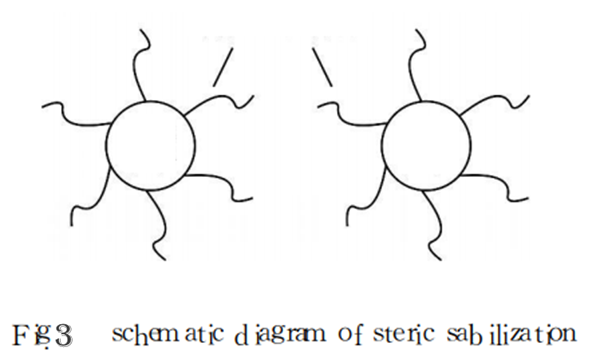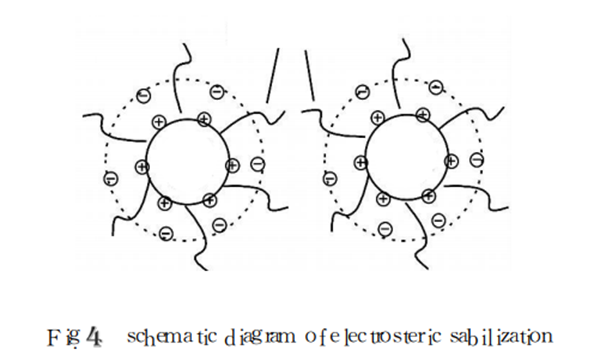- Home
- Products
- Elementary
- Boride Powder
- 3D Printing Powder
- Sulfide Powder
- Oxide Powder
- Carbide powder
- Nitride Powder
- Silicide Powder
- Hydride Powder
- Telluride Powder
- Selenide Powder
- Stearic Acid Series
- Phosphide Powder
- Nanoparticles
- Metal Alloy
- MAX Phase
- Lithium Battery Anode
- Surfactant
- Molecular sieves
- Concrete Admixtures
- News
- Answers
- Contact
- About
How to improve nanoparticles to make them more superior nanomaterials
Cluster of nanoparticles
The heap of nanoparticles can be split into two types: soft pile as well as difficult agglomeration. Soft cluster is generally triggered by the electrostatic pressure in between fragments as well as van der Waals force. As a result of the weak pressure, soft pile can pass some chemical approaches.
The legislation or the application of mechanical power to remove; the development of tough pile in addition to electrostatic pressures and also van der Waals pressures, there are chemical bonds, so tough agglomerates are difficult to ruin, need to take some unique approaches to manage.
 < img src="// ueeshop.ly200-cdn. com/u _ file/UPAI/UPAI779
/ 1907/photo/1661a376e4. png"/ > Schematic representation of pile of nanoparticles Dispersion of nanoparticles Among the techniques to avoid the development of high-density, hard-block precipitates of nanoparticles is to reduce van der Waals destination or communication between groups, to ensure that the primary bits are not easily agglomerated to develop additional fragments, therefore preventing more inter-atomic bonding. This causes the formation of high-density, hard-blocked precipitates. The anti-agglomeration device of nanoparticles is divided right into: (1) electrostatic stablizing (DLVO theory); (2) steric stabilization; (3) electrostatic steric stabilization.
Nanoparticle dispersion theory Electrostatic stablizing device (DLVO theory)
The electrostatic stablizing mechanism, also called the electrical dual layer stablizing mechanism, creates an electrical dual layer by changing the pH value to produce a particular quantity of surface area fee on the surface of the fragment. The tourist attraction in between the bits is considerably lowered by the undesirable force between the electrical double layers, thereby realizing the dispersion of the nanoparticles. The mechanism is shown as displayed in Number 2.
< img src="// ueeshop.ly200-cdn. com/u _ file/UPAI/UPAI779
/ 1907/photo/1661a376e4. png"/ > Schematic representation of pile of nanoparticles Dispersion of nanoparticles Among the techniques to avoid the development of high-density, hard-block precipitates of nanoparticles is to reduce van der Waals destination or communication between groups, to ensure that the primary bits are not easily agglomerated to develop additional fragments, therefore preventing more inter-atomic bonding. This causes the formation of high-density, hard-blocked precipitates. The anti-agglomeration device of nanoparticles is divided right into: (1) electrostatic stablizing (DLVO theory); (2) steric stabilization; (3) electrostatic steric stabilization.
Nanoparticle dispersion theory Electrostatic stablizing device (DLVO theory)
The electrostatic stablizing mechanism, also called the electrical dual layer stablizing mechanism, creates an electrical dual layer by changing the pH value to produce a particular quantity of surface area fee on the surface of the fragment. The tourist attraction in between the bits is considerably lowered by the undesirable force between the electrical double layers, thereby realizing the dispersion of the nanoparticles. The mechanism is shown as displayed in Number 2.

- < img src="// ueeshop.ly200-cdn. com/u _ file/UPAI/UPAI779/ 1907/photo/38c1a5ba33. png"/ > Stochastic stabilization mechanism The steric stabilization system is to include a particular amount of uncharged polymer substance to the suspension to adsorb it around the nanoparticles to form a microcell state, which causes repulsion between the bits, thus achieving the purpose of dispersion. The system diagram is displayed in Figure 4.
- Electrostatic steric stabilization system
The pH worth of the polyelectrolyte maximizes the dissociation degree of the polyelectrolyte, so that the polyelectrolyte on the surface area of the fragment reaches the saturated adsorption, as well as both with each other function to uniformly disperse the nanoparticles. The mechanism layout is received Number 3.
 < img src="// ueeshop.ly200-cdn.
com/u _ file/UPAI/UPAI779/ 1907/photo/ed7d9c96f4. png"/ > Nanoparticle dispersion technique The diffusion of nanoparticles in the medium is typically split into three stages: 1 fluid wetting the solid particles; 2 dispersing the bigger aggregates right into smaller bits by outside force; 3 supporting the distributed bits, guaranteeing that the powder bits remain in the liquid The stage stays uniformly distributed for a lengthy period of time to stop the distributed particles from re-aggregating. According to various diffusion devices, it can be divided right into mechanical activity technique as well as surface adjustment technique.
< img src="// ueeshop.ly200-cdn.
com/u _ file/UPAI/UPAI779/ 1907/photo/ed7d9c96f4. png"/ > Nanoparticle dispersion technique The diffusion of nanoparticles in the medium is typically split into three stages: 1 fluid wetting the solid particles; 2 dispersing the bigger aggregates right into smaller bits by outside force; 3 supporting the distributed bits, guaranteeing that the powder bits remain in the liquid The stage stays uniformly distributed for a lengthy period of time to stop the distributed particles from re-aggregating. According to various diffusion devices, it can be divided right into mechanical activity technique as well as surface adjustment technique.
- Mechanical activity
- Surface area adjustment
- Surface adjustment of nanoparticles by not natural materials
- Surface alteration of nanoparticles by organic issue
 < img src ="// ueeshop.ly200-cdn.
com/u _ file/UPAI/UPAI779/ 1907/photo/c845513ec8. png"/ > verdict The surface modification modern technology of nanoparticles is an edge technique very closely associated to many other techniques, including colloidal chemistry, organic chemistry, crystallography, nanomaterials, modern instrument evaluation and testing. The surface coating modification modern technology has been extensively utilized in the surface alteration of nanometers, and also the research results in this area likewise reveal that the surface area covering innovation has a good development possibility. However, the adjustment device, alteration technique and equipment, as well as the adjustment impact characterization are still not best. Sometimes, the issue can not be addressed fundamentally, and further study is urgently needed. As a result of the substantial adjustments in the physical as well as chemical homes of the surface-treated particles, the growth of nano surface modification modern technology is considered an important methods of creating brand-new materials in the future. With the constant study and also understanding of nano-particles, and also even more exploration of the surface adjustment of nano-powders, nano-technology will absolutely exert prospective power in different fields and will certainly generate an excellent culture. Advantages and also economic advantages.
< img src ="// ueeshop.ly200-cdn.
com/u _ file/UPAI/UPAI779/ 1907/photo/c845513ec8. png"/ > verdict The surface modification modern technology of nanoparticles is an edge technique very closely associated to many other techniques, including colloidal chemistry, organic chemistry, crystallography, nanomaterials, modern instrument evaluation and testing. The surface coating modification modern technology has been extensively utilized in the surface alteration of nanometers, and also the research results in this area likewise reveal that the surface area covering innovation has a good development possibility. However, the adjustment device, alteration technique and equipment, as well as the adjustment impact characterization are still not best. Sometimes, the issue can not be addressed fundamentally, and further study is urgently needed. As a result of the substantial adjustments in the physical as well as chemical homes of the surface-treated particles, the growth of nano surface modification modern technology is considered an important methods of creating brand-new materials in the future. With the constant study and also understanding of nano-particles, and also even more exploration of the surface adjustment of nano-powders, nano-technology will absolutely exert prospective power in different fields and will certainly generate an excellent culture. Advantages and also economic advantages.
Luoyang Technology Co., Ltd is an expert Zinc Nanoparticles manufacturer with over 12 years experience in chemical products r & d. If you are seeking excellent quality Zinc Nanoparticles, please feel complimentary to call us as well as send an inquiry.
Inquiry us
PREVIOUS NEWS
The role of redispersible latex powder in mortar
NEXT NEWS
 < img src="// ueeshop.ly200-cdn.
com/u _ file/UPAI/UPAI779/ 1907/photo/ed7d9c96f4. png"/ > Nanoparticle dispersion technique The diffusion of nanoparticles in the medium is typically split into three stages: 1 fluid wetting the solid particles; 2 dispersing the bigger aggregates right into smaller bits by outside force; 3 supporting the distributed bits, guaranteeing that the powder bits remain in the liquid The stage stays uniformly distributed for a lengthy period of time to stop the distributed particles from re-aggregating. According to various diffusion devices, it can be divided right into mechanical activity technique as well as surface adjustment technique.
< img src="// ueeshop.ly200-cdn.
com/u _ file/UPAI/UPAI779/ 1907/photo/ed7d9c96f4. png"/ > Nanoparticle dispersion technique The diffusion of nanoparticles in the medium is typically split into three stages: 1 fluid wetting the solid particles; 2 dispersing the bigger aggregates right into smaller bits by outside force; 3 supporting the distributed bits, guaranteeing that the powder bits remain in the liquid The stage stays uniformly distributed for a lengthy period of time to stop the distributed particles from re-aggregating. According to various diffusion devices, it can be divided right into mechanical activity technique as well as surface adjustment technique.
 < img src ="// ueeshop.ly200-cdn.
com/u _ file/UPAI/UPAI779/ 1907/photo/c845513ec8. png"/ > verdict The surface modification modern technology of nanoparticles is an edge technique very closely associated to many other techniques, including colloidal chemistry, organic chemistry, crystallography, nanomaterials, modern instrument evaluation and testing. The surface coating modification modern technology has been extensively utilized in the surface alteration of nanometers, and also the research results in this area likewise reveal that the surface area covering innovation has a good development possibility. However, the adjustment device, alteration technique and equipment, as well as the adjustment impact characterization are still not best. Sometimes, the issue can not be addressed fundamentally, and further study is urgently needed. As a result of the substantial adjustments in the physical as well as chemical homes of the surface-treated particles, the growth of nano surface modification modern technology is considered an important methods of creating brand-new materials in the future. With the constant study and also understanding of nano-particles, and also even more exploration of the surface adjustment of nano-powders, nano-technology will absolutely exert prospective power in different fields and will certainly generate an excellent culture. Advantages and also economic advantages.
< img src ="// ueeshop.ly200-cdn.
com/u _ file/UPAI/UPAI779/ 1907/photo/c845513ec8. png"/ > verdict The surface modification modern technology of nanoparticles is an edge technique very closely associated to many other techniques, including colloidal chemistry, organic chemistry, crystallography, nanomaterials, modern instrument evaluation and testing. The surface coating modification modern technology has been extensively utilized in the surface alteration of nanometers, and also the research results in this area likewise reveal that the surface area covering innovation has a good development possibility. However, the adjustment device, alteration technique and equipment, as well as the adjustment impact characterization are still not best. Sometimes, the issue can not be addressed fundamentally, and further study is urgently needed. As a result of the substantial adjustments in the physical as well as chemical homes of the surface-treated particles, the growth of nano surface modification modern technology is considered an important methods of creating brand-new materials in the future. With the constant study and also understanding of nano-particles, and also even more exploration of the surface adjustment of nano-powders, nano-technology will absolutely exert prospective power in different fields and will certainly generate an excellent culture. Advantages and also economic advantages.